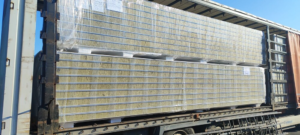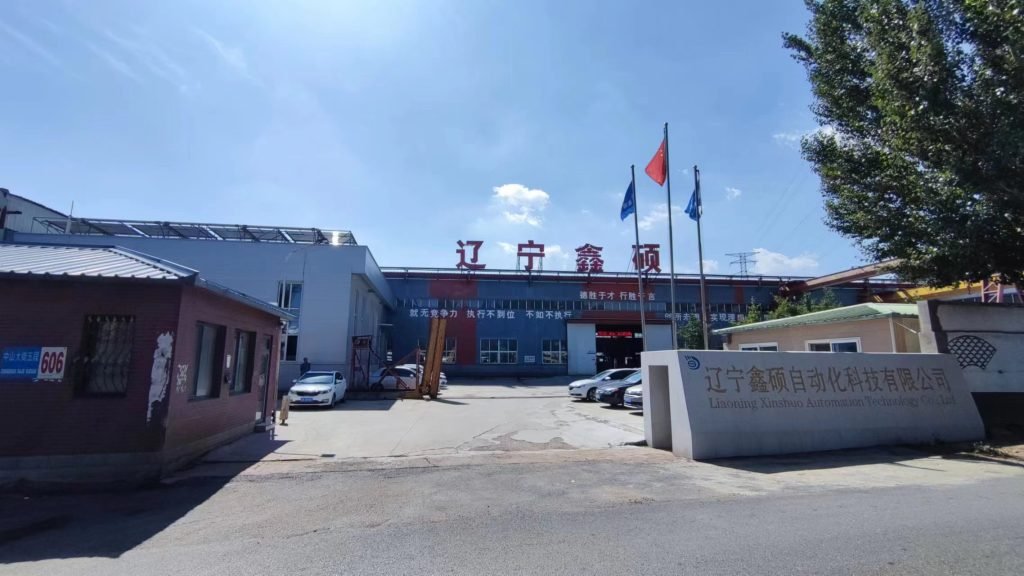A sandwich panel palletizer is an automated machine designed to handle and stack sandwich panels onto pallets for storage or transportation. Sandwich panels are composite materials commonly used in industries like construction, refrigeration, and clean room manufacturing. These panels typically consist of two outer layers (often metal) and a core material, such as foam, mineral wool, or polyurethane, offering lightweight, strength, and excellent insulation properties. Due to their large size and delicate surfaces, manual handling of sandwich panels can be inefficient and prone to causing damage, making automation essential.

Revolutionize Your Sandwich Panel Production with Our Advanced Palletizer
In today’s competitive manufacturing landscape, efficiency, precision, and automation are non-negotiable. If you’re producing sandwich panels—whether for construction, refrigeration, or clean rooms—you’ve likely faced challenges like slow manual stacking, damaged panels, or inconsistent output. Our Sandwich Panel Palletizer solves these problems head-on, delivering a smarter, faster, and more reliable solution. Let’s dive into what it does, why it’s better, and how it transforms your production line.
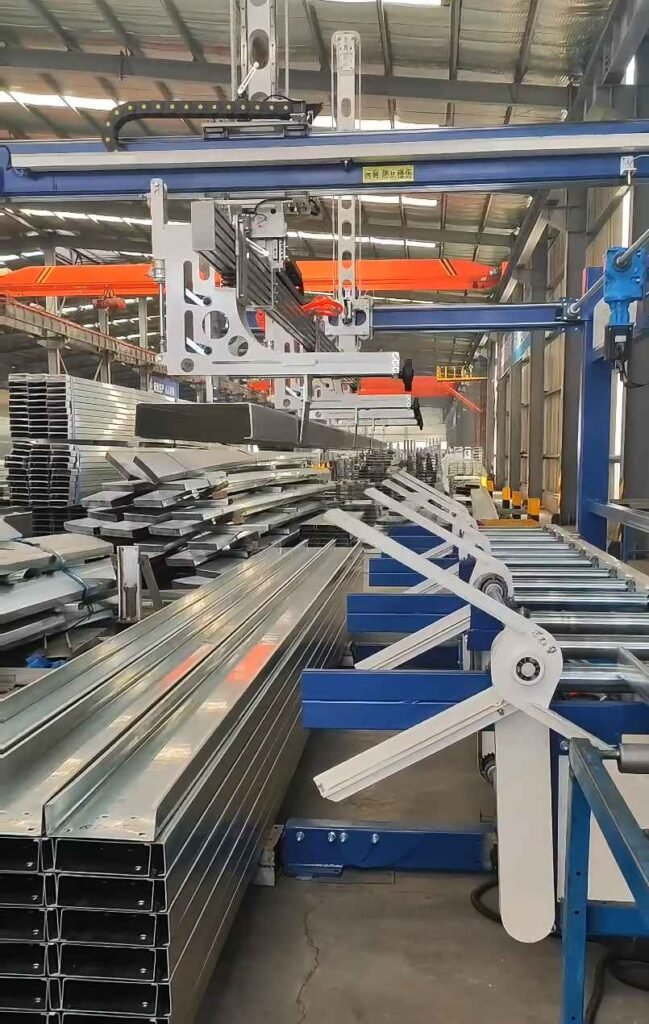

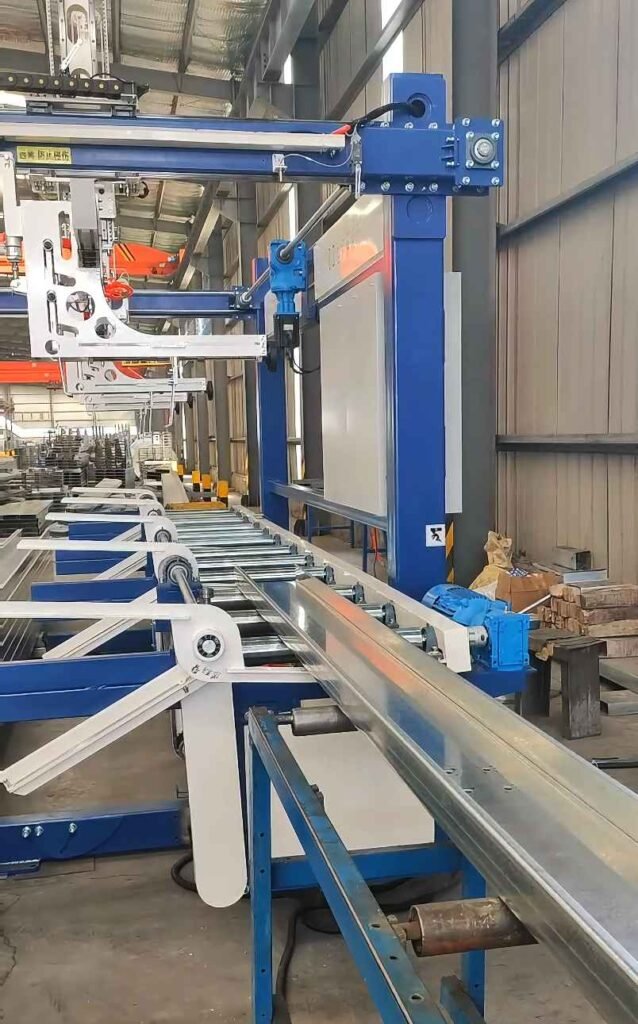

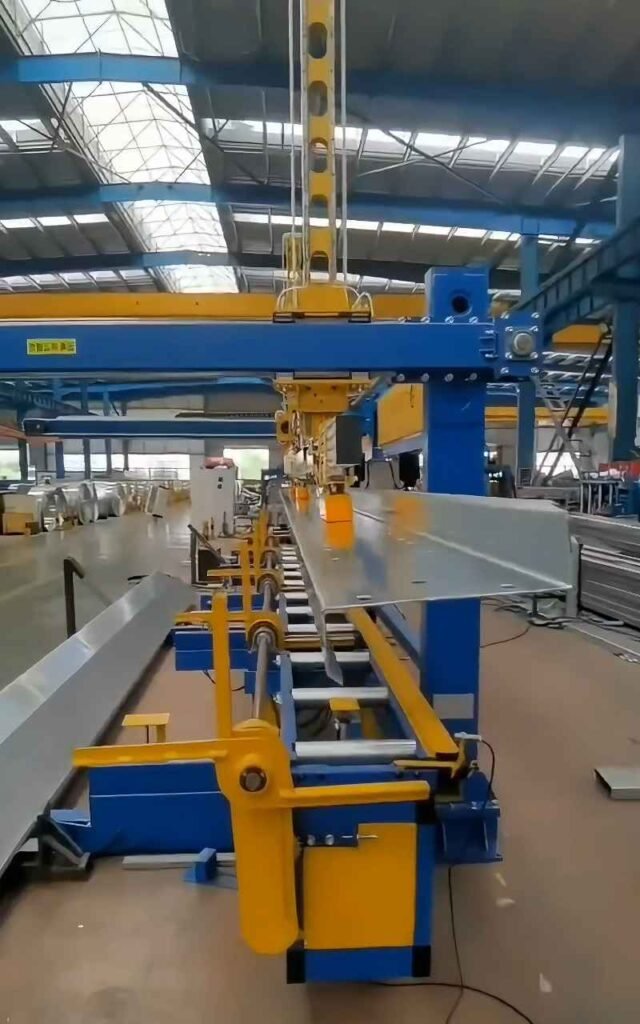

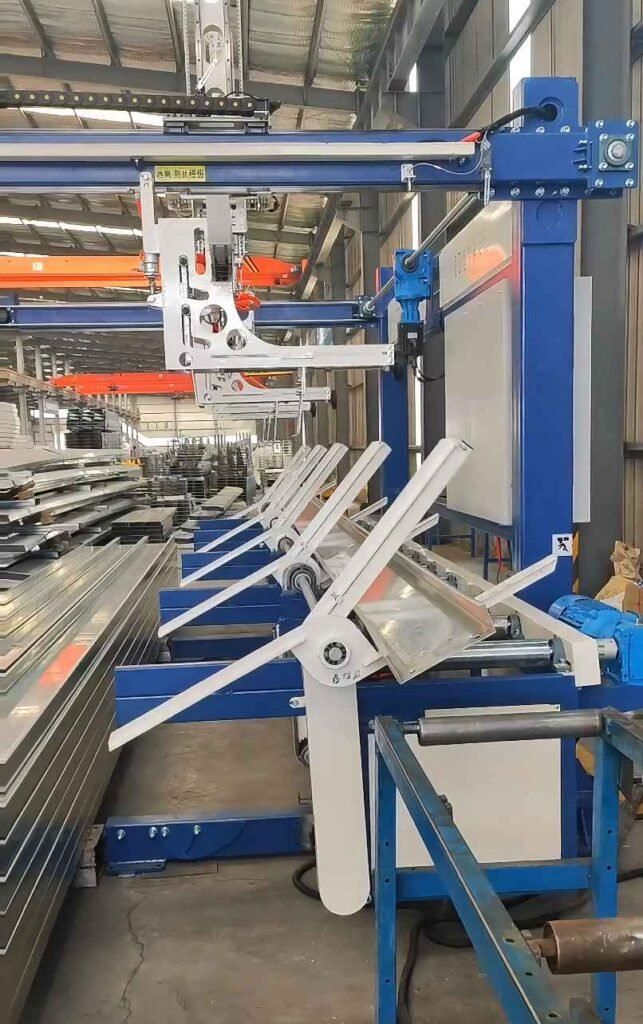

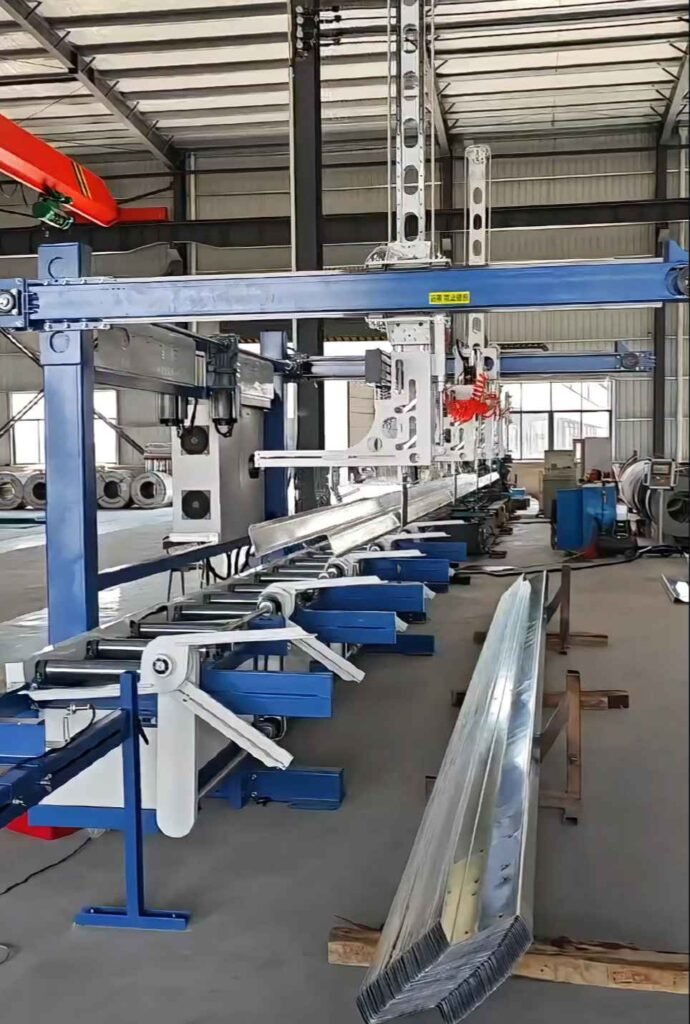


What Exactly Does a Sandwich Panel Palletizer Do?
A Sandwich Panel Palletizer is an automated system that takes finished sandwich panels from your production line and stacks them precisely onto pallets. Unlike manual methods, it ensures consistent stacking, reduces panel damage, and speeds up the process. It’s the final step in creating a seamless, high-output workflow.
- How does it work?
Equipped with advanced sensors and control systems, it detects panel sizes, adjusts automatically, and stacks them with minimal human input. - What panels can it handle?
From lightweight EPS panels to heavy mineral wool or PU/PIR panels, it adapts to various sizes, weights, and core materials. - Why automate this step?
Manual stacking is slow, error-prone, and labor-intensive. Automation cuts time, reduces costs, and boosts throughput.
For a deeper look at how it integrates with production lines, check out our Sandwich Panel Production Line page.
Why Our Palletizer Outshines the Competition
You might wonder: “What makes your Palletizer better than others?” Here’s why manufacturers choose us over competitors:
1. Precision Through Intelligent Design
- Problem: Misaligned stacks or damaged edges during palletizing.
- Solution: Our system uses smart sensors to detect panel dimensions and stack them perfectly every time. No more wasted panels or rework.
- Edge Over Competitors: Many palletizers lack adaptive tech, leading to errors with non-standard sizes. Ours handles variability effortlessly.
2. Unmatched Efficiency
- Problem: Manual stacking slows down your entire line.
- Solution: Our Palletizer cuts stacking time by up to 40%, letting your team focus on production, not logistics.
- Edge Over Competitors: While others offer basic automation, our system optimizes speed and accuracy, reducing bottlenecks.
3. Versatility Across Industries
- Problem: One-size-fits-all palletizers fail with diverse panel types.
- Solution: Whether it’s construction-grade panels, refrigeration insulation, or clean room materials, our Palletizer adjusts seamlessly.
- Edge Over Competitors: Competitors often specialize in one niche. We cover all applications with one machine.
4. Cost Savings That Add Up
- Problem: High labor costs and panel damage eat into profits.
- Solution: Automation slashes labor needs, and precise handling cuts damage rates by up to 30%.
- Edge Over Competitors: Our durable design means lower maintenance costs and longer uptime compared to cheaper alternatives.
Explore how this fits into broader manufacturing upgrades on our Advanced Production Lines page.
Real Problems, Real Solutions: How It Helps You
Let’s tackle the specific issues you’re facing in sandwich panel production:
“My current process damages too many panels.”
- Answer: Our Palletizer’s gentle handling and precise stacking minimize scratches, dents, and edge damage. Customers report a 30% drop in waste after switching.
“Manual stacking can’t keep up with my production line.”
- Answer: Sync it with your line, and it stacks panels as fast as they’re made—up to 10 panels per minute, depending on size. No more slowdowns.
“I work with different panel sizes and types—can it handle that?”
- Answer: Yes. It auto-adjusts to lengths, widths, and thicknesses, from small clean room panels to large construction ones. No manual reconfiguration needed.
“Is it worth the investment?”
- Answer: Absolutely. With labor savings, reduced waste, and higher output, most clients see ROI within 12-18 months.
Where It Shines: Industry Applications
Our Palletizer isn’t just a tool—it’s a game-changer across multiple sectors:
- Construction: Stacks panels for easy transport, optimizing space and protecting quality. Learn more about its construction impact on our Revolutionizing Construction page.
- Refrigeration: Preserves insulation integrity for cold storage panels, ensuring performance.
- Clean Rooms: Minimizes human contact, maintaining sterile conditions for sensitive environments.
What Our Customers Say
“We used to lose 5-10 panels a day to stacking errors. Since installing this Palletizer, damage is nearly zero, and our output’s up 25%.”
— Sarah Lee, Operations Lead
“The flexibility is unreal. We switch between PU and mineral wool panels daily, and it adjusts without a hitch.”
— Ahmed Khan, Plant Manager
Ready to Transform Your Production?
Investing in our Sandwich Panel Palletizer means more than just buying equipment—it’s about solving inefficiencies, cutting costs, and staying ahead of the competition. With its intelligent automation, unmatched versatility, and real-world results, it’s the upgrade your production line deserves.
Have questions? Want to see it in action or get a custom quote? Contact us today and let’s revolutionize your workflow together.
This article uses targeted keywords like “Sandwich Panel Palletizer,” “automated palletizing system,” and “efficient sandwich panel handling” for SEO, while keeping content concise, professional, and focused on solving user problems. Internal links enhance site structure without cluttering the narrative.

